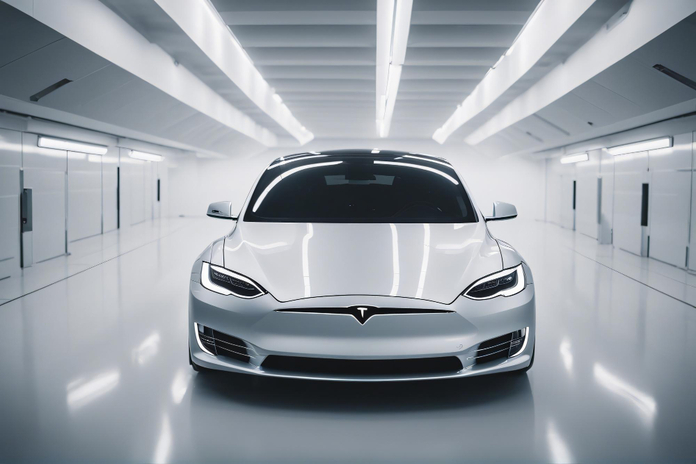Tesla’s (NASDAQ:TSLA) global sales fell for the second consecutive quarter despite implementing price cuts and offering low-interest financing, signaling a continued softening demand for its products and electric vehicles overall.
On Tuesday, the Austin, Texas-based company reported selling 443,956 vehicles from April through June, a 4.8% decrease from the 466,140 sold in the same period last year. However, this figure surpassed analysts’ expectations of 436,000.
This better-than-expected performance boosted Tesla’s stock by over 9% in midday trading Tuesday. Although Tesla’s stock is down about 8% year-to-date, it has rebounded from a more significant decline earlier in the year, recovering from a more than 40% drop to a current increase of over 60% since its 52-week low in April.
The global demand for electric vehicles is slowing, but it remains on an upward trajectory for most automakers. Tesla, facing challenges with an aging model lineup and relatively high average selling prices, has struggled more than others. Nonetheless, it maintains its position as the world’s top-selling electric vehicle manufacturer.
In the first half of the year, Tesla sold over 910,000 vehicles worldwide, significantly outpacing China’s BYD, which sold 726,153 vehicles.
Tesla also sold over 33,000 more vehicles in the second quarter than it produced, likely reducing its inventory.
Competition Is Heating Up for Tesla
The sales decline comes amid increasing competition from both legacy and startup automakers aiming to capture Tesla’s market share. Most other automakers will report their U.S. sales figures later on Tuesday.
Tesla did not provide a reason for the sales decline, which may foreshadow its second-quarter earnings report on July 23.
Nearly all of Tesla’s sales came from the smaller and less expensive Models 3 and Y, with only 21,551 of its pricier models, including the X, S, and the new Cybertruck, being sold.
Despite the sales decline, Tesla had reduced the prices of three of its five U.S. models by $2,000 in April. The price cuts included the Model Y, Tesla’s most popular model and the top-selling electric vehicle in the U.S., as well as the Models X and S.
In April, the starting price for a Model Y was reduced to $42,990, while the Model S was priced at $72,990 and the Model X at $77,990. Last week, Tesla further cut $2,340 off the $38,990 base price of some newly revamped Model 3s.
Additionally, Tesla offered 0.99% financing for up to six years on the Model Y in May and interest rates as low as 1.99% for three years on the rear-wheel-drive Model 3 in June. Typical new-vehicle interest rates average just over 7%, according to Edmunds.com.
During the quarter, Tesla also reduced the price of its “Full Self Driving” system by a third, from $12,000 to $8,000, according to the company website.
Jessica Caldwell, head of insights for Edmunds.com, noted that Tesla is struggling in a market where most early adopters already own EVs, and mainstream buyers remain skeptical about electric cars meeting their needs.
Caldwell added that Tesla’s “haphazard” price cuts are less effective now as consumers have come to expect them. She remarked, “We’ve seen the automaker exhaust its bag of tricks by lowering prices and increasing incentives to spur demand without much success in the U.S. market.”
Caldwell also mentioned that Tesla’s aging model lineup looks much the same as it did years ago, and with the price cuts, used Tesla prices have dropped significantly. She noted that anyone wanting a Tesla can get a much better deal by purchasing a used one.
Caldwell doesn’t foresee any major catalyst this year that would boost Tesla sales unless gasoline prices spike, and she pointed out that Musk’s shift to the right since taking over Twitter has negatively impacted the brand’s image.
Wedbush analyst Dan Ives described the second-quarter sales as a “huge comeback performance” for Tesla. “In a nutshell, the worst is in the rearview mirror for Tesla,” he wrote, noting that the company cut 10% to 15% of its workforce to reduce costs and maintain profitability. “It appears better days are now ahead as the growth story returns,” Ives added.
In its January letter to investors, Tesla predicted “notably lower” sales growth for the year, stating that the company is between two significant growth waves—one from the global expansion of the Models 3 and Y, and a second anticipated from the Model 2, a new, smaller, and less expensive vehicle with an unknown release date.
Tesla is set to unveil a purpose-built robotaxi at an event on August 8.
Featured Image: Freepik

















